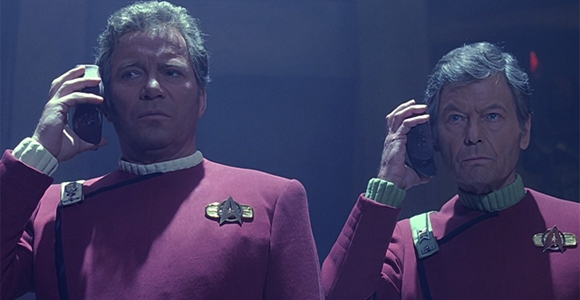Microsoft Is Developing A Universal Translator. Yes, That Thing From Star Trek.
Thing That Might Have to Exist

I’ll never forget the day I learned about universal translators from Star Trek. I remember thinking I wouldn’t have to bother learning any other languages because surely we were close enough technologically to them becoming a reality. Well, three and a half years of German classes later, we still didn’t have them. But! The time is near, lazy language lovers! Microsoft is developing a universal translator as we speak!
Star Trek may be where I first heard about universal translators but they’ve been a popular item in sci-fi for a long time. Author Murray Leinster seems to have been the first to introduce the concept to readers in h is 1945 novella First Contact but it’s been used in Doctor Who, Star Wars, and Futurama just to name a few other instances of its use. The purpose of the device is pretty self-explanatory. It’s used to translate one language to another and in most cases, keep a users voice intact. It’s how we can hear what all those aliens are saying without having to use subtitles on screen.
According to Technology Review, a Microsoft researcher is close to creating a real one. “In a demonstration at Microsoft’s Redmond, Washington, campus on Tuesday, Microsoft research scientist Frank Soong showed how his software could read out text in Spanish using the voice of his boss, Rick Rashid, who leads Microsoft’s research efforts,” they reported. “In a second demonstration, Soong used his software to grant Craig Mundie, Microsoft’s chief research and strategy officer, the ability to speak Mandarin.”
The website has sound files on Soong’s demonstration and they’re pretty impressive. “In English, a synthetic version of Mundie’s voice welcomed the audience to an open day held by Microsoft Research, concluding, ‘With the help of this system, now I can speak Mandarin.’ The phrase was repeated in Mandarin Chinese, in what was still recognizably Mundie’s voice,” wrote TR.
Soon has been developing the universal translator technology with fellow colleagues from Microsoft Research Asia, the company’s second-largest research lab, in Beijing, China. Obviously, yes, this would be great for people too lazy to learn another language but it can actually used to help teach that language. “The new technique could also be used to help students learn a language, said Soong. Providing sample foreign phrases in a person’s own voice could be encouraging, or easier to imitate,” wrote TR. “Soong also showed how his new system could improve a navigational directions phone app, allowing a stock synthetic English voice to seamlessly read out text written on Chinese road signs as it relayed instructions for a route in Beijing.”
The system can read text in an individuals own voice with about an hour of training, similar to dictation software years ago. As of right now, the technology can translate between any pair of 26 languages.
“The word is just one part of what a person is saying,” says Shrikanth Narayanan, “Preserving voice, preserving intonation, those things matter, and this project clearly knows that. Our systems need to capture the expression a person is trying to convey, who they are, and how they’re saying it.”
Microsoft’s universal translator (they aren’t actually calling it that) is still being perfected so there’s no date yet as to when it would be available for public consumption. All I can say is, sign me up. Or should that be, beam me up?
(via Tom’s Guide)
Have a tip we should know? tips@themarysue.com